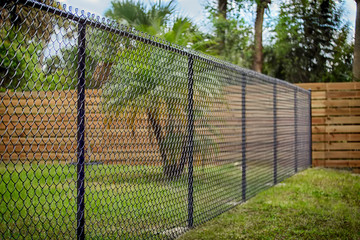In today’s fast-paced digital environment, the speed at which your website loads is more crucial than ever. Improve website load speed not only enhances user experience but also plays a pivotal role in your website’s SEO performance. A site that loads quickly can lead to better rankings on search engines, lower bounce rates, and higher user engagement. Here’s a comprehensive guide on how to boost site load time and enhance page speed for SEO.
Why Website Speed Matters for SEO
Understanding the relationship between website speed and SEO is essential. Search engines like Google prioritize websites that offer a swift, seamless browsing experience. Sites that load quickly tend to rank higher in search results because they are perceived as more user-friendly. Conversely, slow-loading pages can frustrate visitors, leading to increased bounce rates and decreased time spent on the site—factors that can negatively impact SEO.
1. Optimize Images
Images often constitute the bulk of your website’s data, and large image files can significantly slow down load times. To improve website load speed, compress images without sacrificing quality. Tools such as TinyPNG or ImageOptim are excellent for this task. Additionally, use appropriate file formats: JPEG for photos, PNG for graphics with transparency, and WebP for superior compression.
Implementing responsive images that adapt to various screen sizes also ensures that your pages load efficiently across devices.
2. Minimize HTTP Requests
Each element on a webpage—be it images, scripts, or stylesheets—requires an HTTP request. Reducing the number of these requests is crucial for boosting site load time. Combine CSS files and JavaScript files where possible. Utilize CSS sprites to merge multiple images into one file. These strategies streamline the loading process and decrease server requests, leading to faster page rendering.
3. Leverage Browser Caching
Browser caching stores certain elements of your site on a visitor’s device, allowing them to be loaded faster on subsequent visits. By setting cache expiration dates for static resources, you reduce the amount of data that needs to be fetched from the server each time a user visits your site. Proper configuration of browser caching can significantly enhance page speed for SEO.
4. Enable Compression
File compression reduces the size of your HTML, CSS, and JavaScript files, leading to faster load times. Enable Gzip or Brotli compression on your server to automatically compress these files before they are sent to the browser. This technique reduces the amount of data transferred, improving both speed and performance.
5. Use a Content Delivery Network (CDN)
A Content Delivery Network (CDN) distributes your site’s content across a network of servers located around the globe. This means users access your site from the server closest to them, which reduces latency and speeds up load times. Utilizing a CDN is an effective way to boost site load time and handle high traffic efficiently.
6. Minify CSS, JavaScript, and HTML
Minification involves stripping out unnecessary characters from your website’s code, such as whitespace and comments, without affecting its functionality. This process reduces file sizes and helps your pages load more quickly. Numerous tools and plugins can automate the minification of CSS, JavaScript, and HTML, ensuring that your site’s code remains lean and efficient.
7. Optimize Web Hosting
The quality of your web hosting provider can greatly impact load speed. Opt for a reputable hosting service that offers fast server response times and reliable performance. If you experience high traffic volumes, consider upgrading to a dedicated server or a Virtual Private Server (VPS) to ensure your site can handle increased demand without sacrificing speed.
8. Implement Lazy Loading
Lazy loading is a technique where media files, such as images and videos, are only loaded when they come into the user’s viewport. This reduces the initial load time of your webpage and improves performance, especially for pages with extensive media content. By loading only the necessary content initially, you enhance the user experience and boost site load time.
9. Regularly Monitor and Test Performance
Continuous monitoring and testing of your website’s performance are vital to maintaining optimal speed. Utilize tools like Google PageSpeed Insights, GTmetrix, or Pingdom to analyze your site’s speed and identify areas for improvement. These tools provide actionable insights to enhance page speed for SEO and keep your website running smoothly.
Conclusion
Improving your website’s load speed is a crucial element of effective SEO. By optimizing images, minimizing HTTP requests, leveraging browser caching, enabling compression, and using a CDN, you can significantly boost site load time. Additionally, minifying code, optimizing web hosting, implementing lazy loading, and regularly monitoring performance are essential strategies for maintaining fast-loading pages.
Incorporate these practices to ensure your website not only delivers a superior user experience but also ranks favorably in search engine results. By focusing on website speed and SEO, you can achieve better performance, higher rankings, and a more engaging online presence.





More Stories
The Importance of Backlinks in SEO Success
How to Leverage Social Media for Better SEO
How to Measure Your SEO Success: Key Metrics